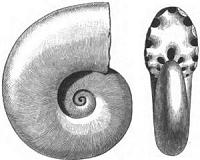| . |  |
. |
Edmonton, Canada (SPX) Jan 17, 2011 Persistence paid off for a University of Alberta paleontology researcher, who after months of pondering the origins of a fossilized jaw bone, finally identified it as a new species of pterosaur, a flying reptile that lived 70 million years ago. Victoria Arbour says she was stumped when the small piece of jaw bone was first pulled out of of a fossil storage cabinet in the U of A's paleontology department. "It could have been from a dinosaur, a fish or a marine reptile," said Arbour." Arbour, a PhD student in paleontology, says the first clue to the fossil's identify came after she compared it to known species of pterosaurs, "I found a previously published paper describing the teeth of a previously discovered pterosaur and ours was very close," said Arbour. "The teeth of our fossil were small and set close together," said Arbour. "They reminded me of piranha teeth, designed for pecking away at meat." That led Arbour to believe her new species, named Gwawinapterus beardi was a scavenger of the late Cretaceous. "It had a wing span of about 3 metres and patrolled the sky and set down to feed on the leftover kills made by predator dinosaurs of the time such as Albertosaurus." The fossil is not only a new species it's the first pterosaur of any kind to be found in British Columbia. It was found on Hornby Island, off the coast of Vancouver Island However, Arbour says the place where the fossil was located has little to do with the actual area where the living pterosaur, was actually flying around 70 million years ago. "In the late Cretaceous period, the B.C. coastal islands were about 2,500 kilometres to the south and part of what is now mainland, California," said Arbour. Arbour's research was published in the Canadian Journal of Earth Sciences.
Share This Article With Planet Earth
Related Links University of Alberta Darwin Today At TerraDaily.com
 Species Loss Tied To Ecosystem Collapse And Recovery
Species Loss Tied To Ecosystem Collapse And RecoveryProvidence RI (SPX) Jan 17, 2011 The world's oceans are under siege. Conservation biologists regularly note the precipitous decline of key species, such as cod, bluefin tuna, swordfish and sharks. Lose enough of these top-line predators (among other species), and the fear is that the oceanic web of life may collapse. In a new paper in Geology, researchers at Brown University and the University of Washington used a group o ... read more |
|
| The content herein, unless otherwise known to be public domain, are Copyright 1995-2010 - SpaceDaily. AFP and UPI Wire Stories are copyright Agence France-Presse and United Press International. ESA Portal Reports are copyright European Space Agency. All NASA sourced material is public domain. Additional copyrights may apply in whole or part to other bona fide parties. Advertising does not imply endorsement,agreement or approval of any opinions, statements or information provided by SpaceDaily on any Web page published or hosted by SpaceDaily. Privacy Statement |